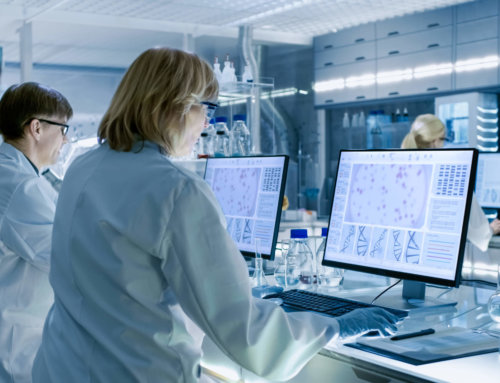The Value of Sensitive Pooled Surveillance Testing

Small businesses and community groups have been particularly hard hit by COVID-19, both financially and in the availability and continuity of their essential staff. We have been conducting daily COVID-19 pooled surveillance testing for one such cohort of approximately 25 individuals of a 3-generational family plus friends, neighbors and household employees since July 13, 2020.
What is pooled surveillance testing?
Pooled surveillance testing does not require a prescription and looks for infection within a defined population or community and can be used for making health management decisions at the population level. Diagnostic testing, on the other hand, does require a prescription and can be more expensive and time-consuming because it looks for the occurrence of COVID-19 at the individual level. The economics of this tradeoff are enhanced with pooled-sample surveillance testing particularly suited to populations with low (<5%) COVID-19 positivity rates.
Which testing protocol was used?
Our test is comprised of an RT-PCR assay using robotic extraction and plate assembly, followed by RT-PCR analysis on a Thermo Fisher QuantStudio Dx. This laboratory workflow yields results within 3-4 hours of sample arrival at our laboratory. The assay targets two viral targets and one human RNA target, the latter to measure the quality of the patient sample, in a single-well multiplexed assay. The utilized assay was issued Emergency Use Authorization by FDA in mid-May for diagnostic testing and was shown to be extremely sensitive with a lower limit of detection of a single virus per microliter. In fact, analysis of a blinded FDA Reference Panel of pathogens at various dilutions yielded a high ranking against other COVID-19 assays with essentially 100% specificity and 100% sensitivity. There is no cross-reactivity with any other respiratory pathogens known to infect humans. Analysis in silico demonstrated sensitivity of the assay to over 20,000 mutations in SARS-CoV-2, the virus that causes COVID-19.
There have been no known instances of false positives or false negatives in our pooled surveillance testing. However, during validation, our assay’s high degree of sensitivity did display discordant results on biobanked samples from a third-party lab that had previously tested negative utilizing another third-party EUA authorized assay. When the samples were tested using a third sensitive EUA RT-PCR assay, we found our assay detected more than 25% false negative results originally recorded using the original EUA authorized assay.
How was the cohort managed?
Each member of the cohort was guided by the sponsor to follow CDC guidelines for wearing masks, hand and surface sanitization and social distancing. The sponsor was especially meticulous and practiced sanitization of food packaging surfaces and quarantining of food before consumption. Simply stated, this cohort was and is aware of the infectious quality of COVID-19 and used safe practices well above the norm.
Daily pooled surveillance testing was performed on the cohort according to CDC guidelines. Saliva samples were self-collected. Pools of equal aliquots of the saliva from 5 individuals whose identity was anonymized by the sponsor, were subjected to viral lysis before RNA extraction, plate assembly and RT-PCR analysis. causes COVID-19.
What was the result?
On October 2, a pool containing one of the cohort’s saliva sample yielded a very weak signal for one of the two COVID-19 targets. Detection of the weak signal occurred after 38 PCR cycles, (if a signal is not seen within 40 cycles on our assay, the sample is presumed negative). Putting this in perspective, 38 cycles correlates to a signal amplification of 275 billion times for any signal present in the sample pool.
We next examined the individual saliva samples comprising the pool in isolation to confirm the positive reading, per CDC guidance. Each individual sample was tested in triplicate. Only one individual sample yielded any indication of SARS-CoV-2 but the signal was again quite weak and inconsistent in the triplicate results.
We requested a fresh pool of samples from the same 5 individuals 24 hours later and detected signal for both viral amplicons at an amplification that was 4,000 times less than the prior signal, indicating a very large increase in viral load within one day. Upon detection of the positive pool, the 5 members of the pool were referred to a physician for individual diagnostic testing and quarantined. Meanwhile we disambiguated (deconvoluted) the pool and identified virus in a single individual’s sample, who subsequently exhibited symptoms of COVID-19 within 3 days. Daily pooled surveillance tests of the remaining cohort for the following 12 days did not yield any positives, indicating the infection was likely contained by the quick action enabled by surveillance testing.
Conclusion
Proactive, periodic pooled surveillance testing with a high-sensitivity RT-PCR test offers a greater likelihood of detection before virus spreads than testing only symptomatic individuals with rapid diagnostic methods, especially in regions where the COVID-19 testing positivity rate is low. Daily pooled surveillance can pick up very early stage infections that are or rapidly become infectious before less sensitive rapid antigen tests. Pooling saves time and money, and when combined with a sensitive RT-PCR assay, provides critical insight into the COVID-19 penetration even in smaller cohorts.



